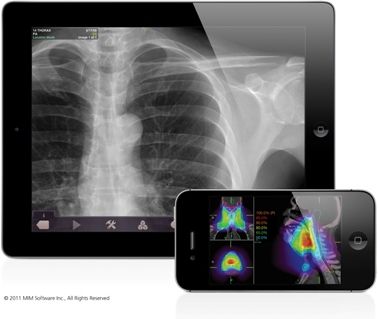FDA Clears Latest Version of Mobile Imaging App
The U.S. Food and Drug Administration has cleared the new version of MIM Software’s mobile imaging app, which is now approved for diagnostic X-ray and ultrasound viewing, the company announced.
The U.S. Food and Drug Administration has cleared the new version of MIM Software’s mobile imaging app, which is now approved for diagnostic X-ray and ultrasound viewing, the company annouced.
Mobile MIM is also cleared for radiation treatment plan review and approval, the company said. Mobile MIM received FDA 510(k) clearance in February 2011, becoming the first diagnostic radiology app approved for viewing images and medical diagnoses based on CT, MRI, and nuclear medical technology.
Jerimy Brockway, software director at MIM, called the addition of viewing X-ray on a handheld device “a milestone for mobile health.” Mobile MIM can display images of more than 25 megapixels.
Mobile MIM is a thick client that brings the data to the device for fast manipulation independent of network performance, according to the company. Device-level hardware encryption provides security for HIPAA compliance, and users can remove data from the device after viewing.

New Collaboration Offers Promise of Automating Prior Authorizations in Radiology with AI
March 26th 2025In addition to a variety of tools to promote radiology workflow efficiencies, the integration of the Gravity AI tools into the PowerServer RIS platform may reduce time-consuming prior authorizations to minutes for completion.
The Reading Room: Artificial Intelligence: What RSNA 2020 Offered, and What 2021 Could Bring
December 5th 2020Nina Kottler, M.D., chief medical officer of AI at Radiology Partners, discusses, during RSNA 2020, what new developments the annual meeting provided about these technologies, sessions to access, and what to expect in the coming year.